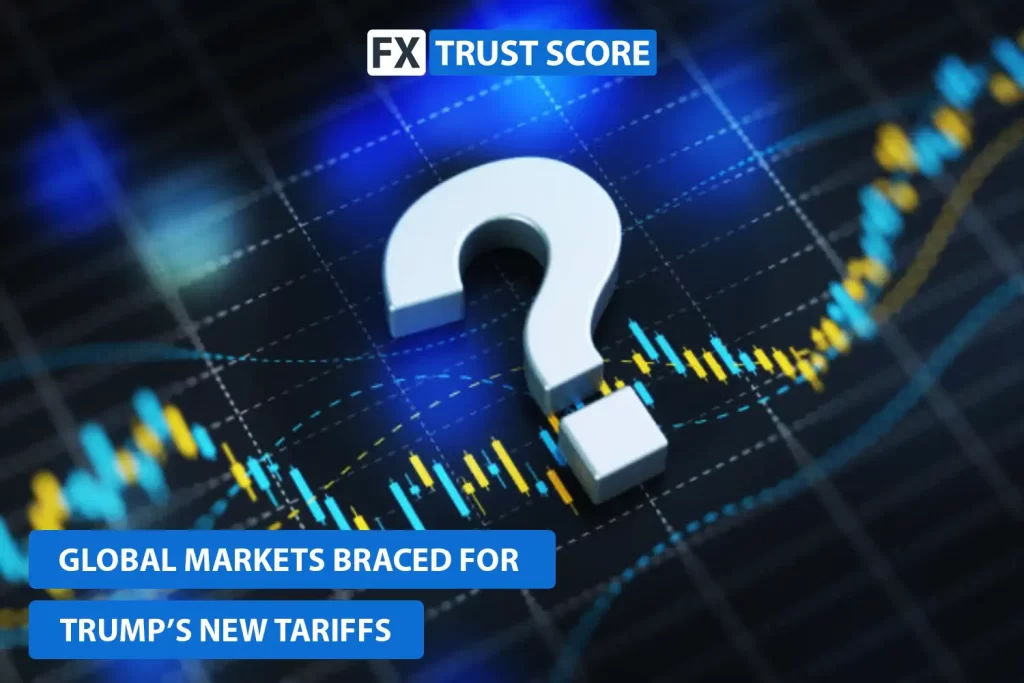The White House has confirmed that President Trump’s long promised tariffs will take immediate effect as soon as he announces them on what he called “Liberation Day”.

Donald Trump is set to unveil a raft of new trade tariffs later today on what the US president labelled as “Liberation Day”. The global markets – and entire nation states – are braced for the impact of what is to come, with exact details of the plans remaining somewhat unclear.
The president will give a speech at 16:00 ET (21:00 GMT+2) where he is expected to set out his policy plans in full. Earlier, White House officials confirmed that the levies will be implemented immediately, as soon as they are announced.
Up until this point, Trump’s economic policy can be broadly characterised as aggressive, yet unpredictable. So far, he has introduced tariffs on steel and aluminium, goods from China, and some products originating in neighbouring Mexico and Canada.
His approach to the policy has contributed to significant uncertainty across multiple markets, ranging from car manufacturing to energy imports. The constant moving of the goalposts has been problematic for many, with the president having threatened, delayed, or withdrawn tariffs on a whole host of goods in recent weeks.
With this in mind, what is the state of play regarding international trade relations? We take a closer look at how we got here, where we stand today and what to expect from the “Liberation Day” announcement.
Tariff Timeline of events
Throughout his presidential campaign, Trump promoted the idea of aggressive taxation as a key part of his economic strategy, viewing them as a vital tool to boost the economy and protect US jobs.
Since the new US administration entered office, it has been a rollercoaster few months for the global markets. National decision-makers and varying industries have had to adapt and respond quickly amid a seemingly ever-changing trading landscape, constantly affected by tariff shocks.
To better understand how we have ended up in this situation, let’s focus on the most important events that have led us to this point.
January
- 20 – Trump calls for tariffs on Mexico, Canada, and China to begin on February 1.
- 26 – Trump threatens 25% tariffs on Colombia after the country refuses to accept US deported migrants, before cancelling the threat after President Petro backs down on the issue.
February
- 1 – Trump signs executive orders to impose tariffs on Canada, Mexico, and China, to commence on February 4. Canada and Mexico threaten to retaliate.
- 3 – Trump delays tariffs on Canada and Mexico for 30 days after addressing concerns over border security and drug trafficking.
- 4 – 10% tariffs are imposed on China, while China retaliates with their own tariffs.
- 10 – Trump announces 25% tariffs on steel imports and raises aluminium tariffs to 25%.
- 13 – Trump signs memorandum preparing for “reciprocal tariffs” to be unveiled on April 2.
- 26 – Trump considers a brief reprieve for Canada and Mexico on the 25% levies until April 2.
- 27 – Trump announces 25% tariffs on Canada and Mexico, to take effect on March 4.
March
- 1 – Trump signs executive order to increase US lumber production and investigates lumber import tariffs.
- 4 – 25% tariffs imposed on Canada and Mexico, with 10% tariff on China. All three countries announce retaliatory tariffs.
- 5 – Trump pauses 25% tariffs on car imports from Canada and Mexico until April 2.
- 6 – Trump postpones 25% tariffs for goods covered by the USMCA.
- 10 – China imposes taxes on US farm products. Canada announces a 25% surcharge on electricity exports from the state of Ontario.
- 11 – Trump proposes the doubling of steel and aluminum tariffs from Canada to 50%, effective March 12. Ontario suspends surcharge, Trump backs away from the 50% tariff rate.
- 12 – The European Union (EU) and Canada reveal retaliatory action against US steel and aluminium tariffs.
- 13 – Trump threatens a 200% tariff on European alcohol in direct response to EU tariffs on US goods.
- 24 – Trump announces a 25% tariff on imports from countries buying oil or gas from Venezuela, due to begin on April 2.
- 26 – Trump declares 25% tariffs on imported cars and car parts.
April
- 2 – 25% import tariffs on Canada and Mexico take effect, while reciprocal tariffs from US trading partners are also announced.
- 3 – Deadline for 25% tariff on imported cars and car parts.
The current state of play and who will tariffs affect?
Due to the on-off nature of this whole episode, it remains extremely difficult to pinpoint exactly where everything stands right at this moment. What is not yet clear is who the tariffs will affect, or whether they will be the same for everyone.
However, what we do know is that both the EU and the UK are prepared to respond in retaliation, should the need arise. Canada has already responded with a 25% levy on US steel and aluminium. China has also hit the US with a 10-15% tax on certain agricultural goods. It will be interesting to see how far the US decides to go, who it will target the most and what the fallout will be from both its allies and adversaries.
What to expect from Trump’s speech
Industry analysts and market experts have been poring over Trump’s words in recent weeks searching for any signs of what he’s planning. In his usual tough talking style, the president said: “The world has been ripping off the United States for the last 40 years and more.” On the matter of tariffs, he simply added: “All we’re doing is being fair.”
Nobody from within the Trump administration has been publicly drawn on the April 2 proposals. On Tuesday, The Washington Post reported that White House aides had drafted a proposal that would levy tariffs of roughly 20% on most imports. Whether this is the case remains to be seen, with markets across the world in the dark over what could be the biggest disruptor of international trade in decades.
Enjoyed reading this article? Discover more of the latest news by heading over to our dedicated Industry News section.






